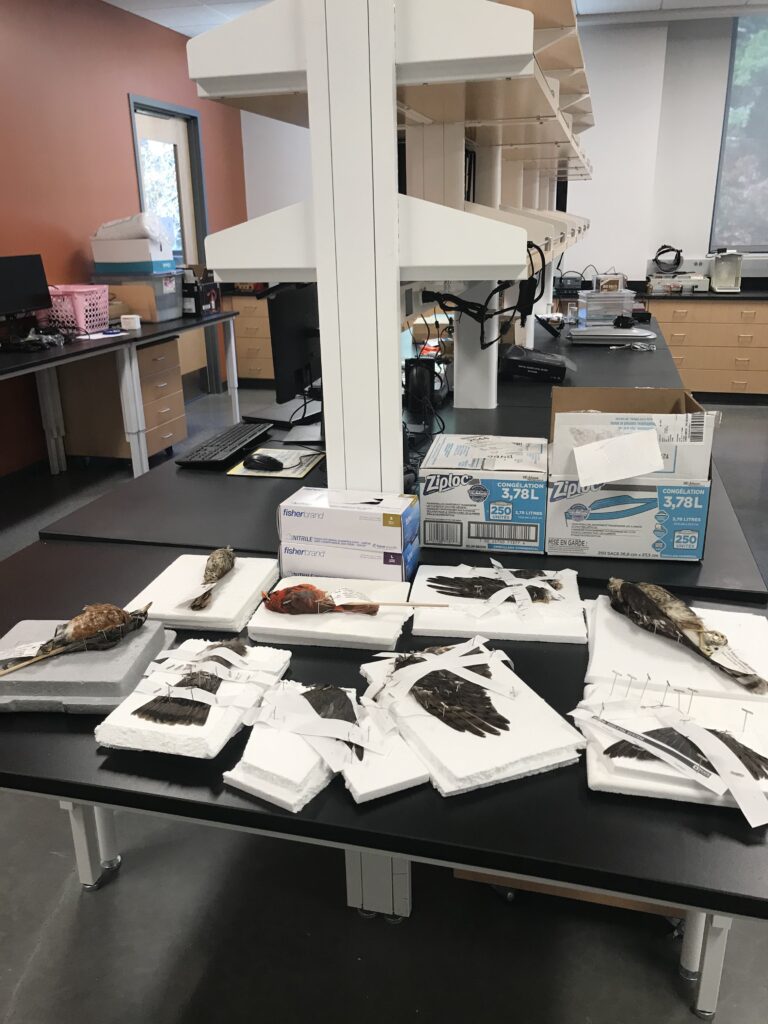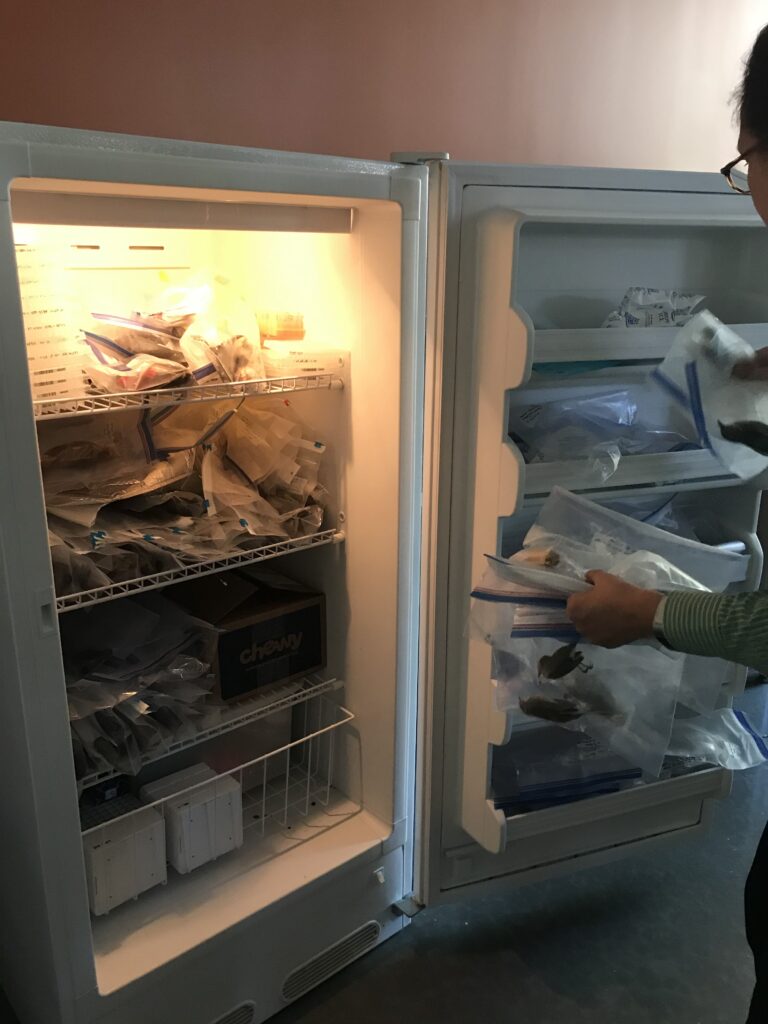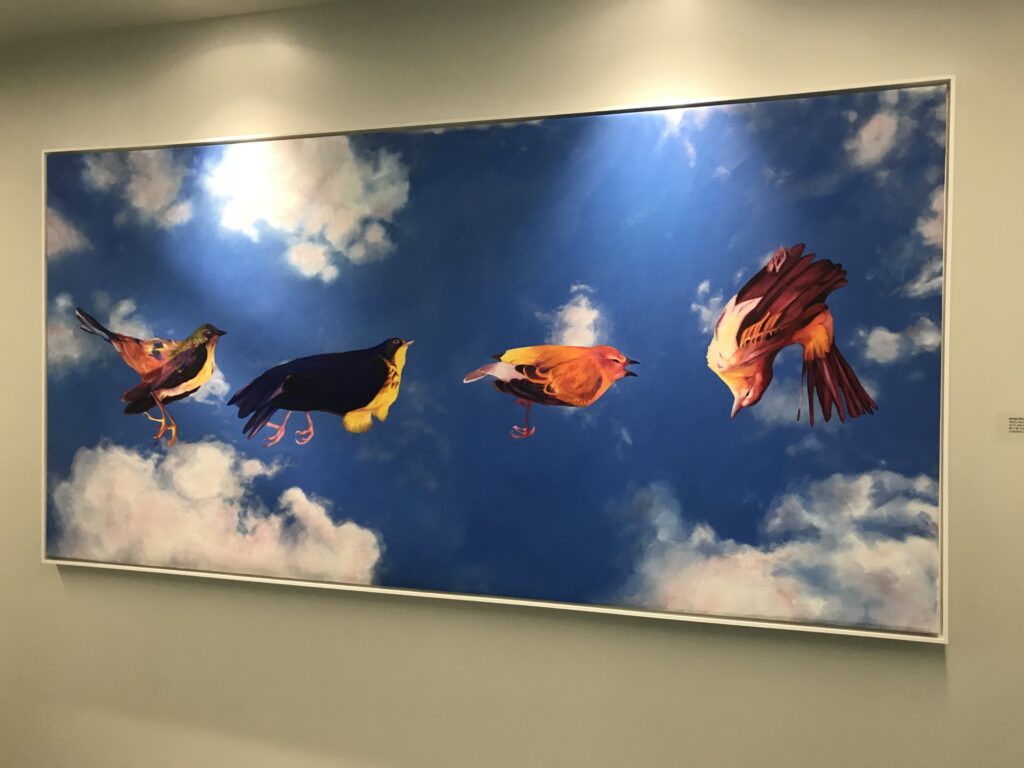Version of the story was originally published in the Western Carolinian.

Dead birds are found throughout campus but who or what is to blame? WCU’s newest and most transparent building, Apodaca, has been linked to the death of close to 60 documented birds this fall.
Bird collisions and how many
The American Bird Conservancy has estimated that more than one billion birds are killed each year due to window collisions in North America. Typically that happens during the migration period from September to November.
The Cornell Lab of Ornithology conducted a study from 2013 to 2017, on bird migrations. Adriaan Dokter, a researcher who worked on the study, said for Cornell Chronicle that “each autumn, an average of 4 billion birds move south from Canada into the U.S. At the same time, another 4.7 billion birds leave the U.S. over the southern border, heading to the tropics… in the spring, 3.5 billion birds cross back into the U.S. from the south, and 2.6 billion birds return to Canada across the northern U.S. border.”
With this finding, birds within the U.S. have an average of 64% of returning alive.
Bird Friendly Program

Dr. Barbara Ballentine is a Biology professor at WCU whose research is focused on birds. Ballentine has been raising awareness about the issue on bird collisions for years. Last fall she started a program where she hires students to gather dead birds around the buildings to study. She received a National Science Foundation (NSF) grant to be able to pay the students. Ballentine would ideally want to hire more students to monitor different buildings throughout the day but appreciates the students who currently help.
The goal of the program is to present the evidence and findings to the administration of WCU, for changes to the windows to make them less reflective to birds.
“They have people on campus that they can talk to about making the environment more friendly. They have expertise that they could take advantage of but I’m still waiting for somebody to contact me,” explained Ballentine about her hope for change.
Solutions to these collisions
There are many different low-cost solutions that are accessible and don’t require remodeling.
One of the biggest issues that is happening is the windows are not bird-friendly in most places around campus which causes a high mortality rate for birds around WCU. Ballentine talked about the morality rates and what is causing the decline in the return rate for birds during migration.
“Bird collisions are one of the major causes of mortality in birds…due to, you know, new fashions in buildings with lots of glass so glass is either transparent or it reflects,” Ballentine said.
David Allen Silbey wrote an article, “Window Pain”, for Birder’s World magazine about bird collisions and solutions to this problem. He experimented with his blog readers on different solutions but his best solution: outside netting or screens which reduces the reflection from the window and if the bird does fly at the window, the netting will catch them causing the bird to bounce off.
Another example is at Swarthmore College in Pennsylvania, fritted glass was installed in their science center which not only makes the windows less reflective but also reduces cooling costs. The cost of the windows was $20,000 but saved Swarthmore around $48,000 in cooling costs.
Ballentine’s solution plan is to raise awareness of the issue, have curtains throughout the building, and have a “lights-out campaign” from October to November. The campaign would have buildings all around the campus have “lights out hours” so birds won’t fly into the buildings at nighttime. Ballentine did acknowledge this might be hard to coordinate especially since most buildings are still used by college students at night. Introducing this solution plan would be saving the lives of birds all around campus, not just one building.
The impact of the study
Once the bird migration is over, Balentine will present her findings, along with all the students, to WCU administration in order to make a change to the windows and prevent this problem with future construction.
“It is picking up some steam… that’s what I was hoping would happen by doing this project and collecting data. Maybe generate some buzz about the issue on campus, I think it will, you know, I don’t think that they’re going to listen to one person say, ‘I think we need to do this with the glass on the buildings’ but if there’s a larger voice especially from the students that could convince someone to do something,” said Ballentine.
While talking about her students, Ballentine described one student who has helped her for two years: Amber Rousseau, a senior art major who studies birds for her art.

She has even created a painting for an art contest that ended up winning for this cause. When people asked about the meaning, she tells them about the issue at hand and what she does with the program. The piece is called “Death Parade.” The painting hangs in Apodaca’s fourth floor.
While the study hasn’t yet made an impact on the birds, its impact on the students is clear.
Ballentine is looking for more students for the program but they are having a hard time reaching out. If you are interested in the Bird Friendly program, email beballentine@email.wcu.edu.



